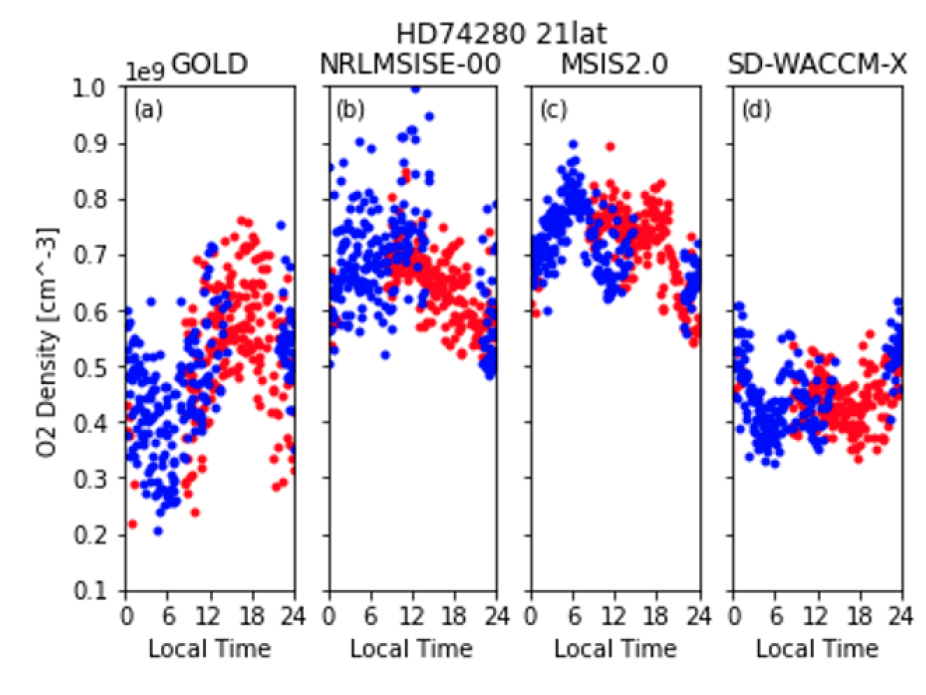Publication: Geophysics Research Letters; Author's: K. R. Greer, F. Laskar, R. Eastes, J. Lumpe, H.-L. Liu, and N. Pedatella

Comparisons of local time structure of molecular oxygen at 21°N, 170 km altitude. Red dots are for the longitude of 33°E, while blue dots are for the longitude of 128°W. Panel (a) shows molecular oxygen densities as observed by the GOLD instrument for one star, HD74280, between January 2019 and July 2021. Panel (b) are results from the MSISE-00 empirical model sampled for the same locations and conditions as the GOLD observations. Panel (c) is as panel (b) but for the MSIS2.0 empirical model. Panel (d) shows the SD-WACCM-X model sampled for the GOLD observations. The observations show a distinctly diurnal structure in local time, while all the model results indicate a semidiurnal structure.
This paper compares new observations from the Global-scale Observations of Limb and Disk (GOLD) mission of molecular oxygen (O2) in the lower thermosphere (130 - 200 km in altitude) to widely used models in the aeronomy community. The main finding is that the local time structure of the observed molecular oxygen has a minimum at 6 hours local time and a peak near 18 hours local time while the models all show a structure that has peaks at both 6 and 18 hours local time. This significant difference not only influences the total neutral thermospheric density results from the models, but may ultimately impact the calculated ionospheric plasma density and its temporal variability. Understanding ionospheric plasma densities is vital for the proper modeling of the propagation of communications and navigational signals.